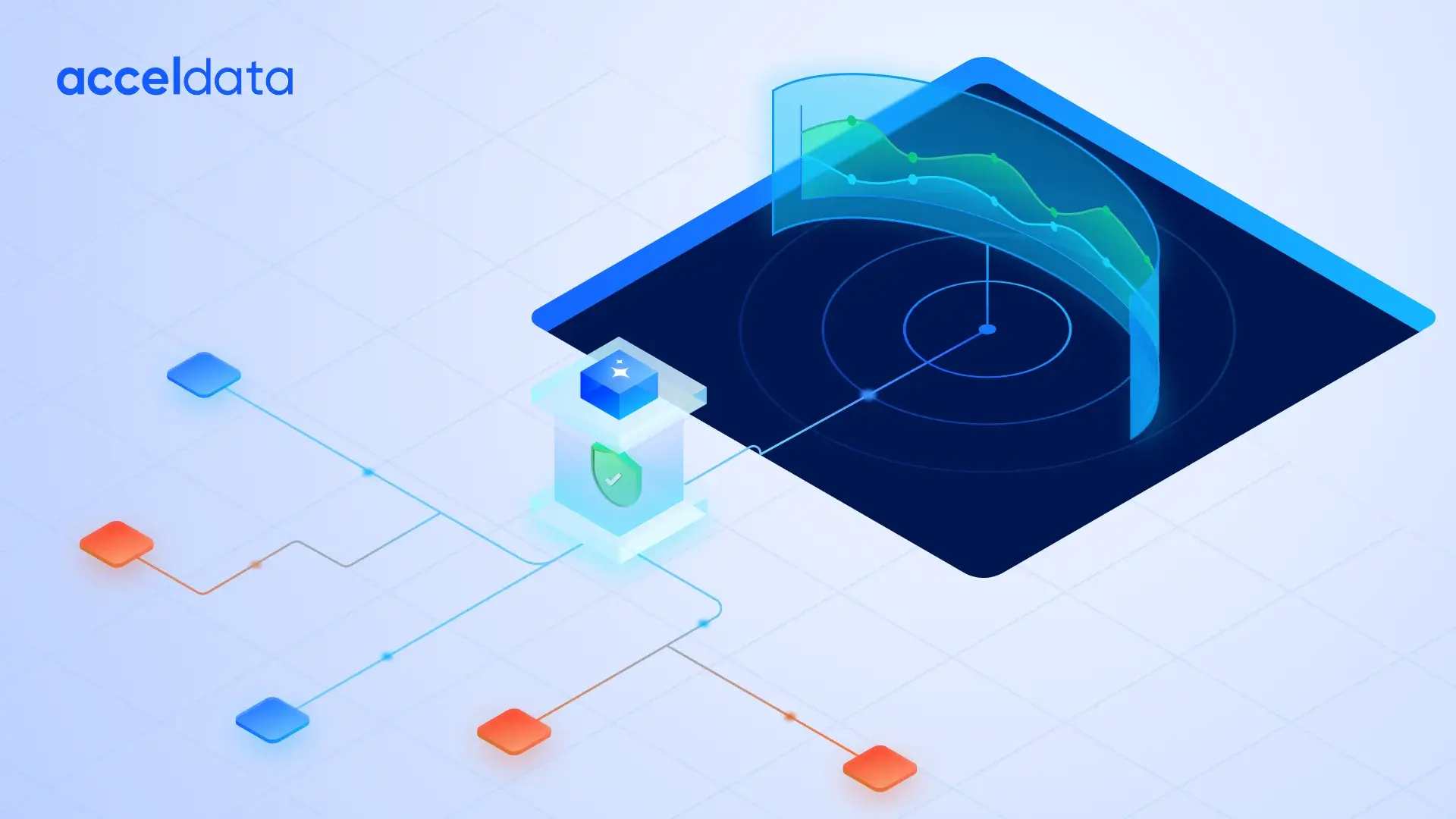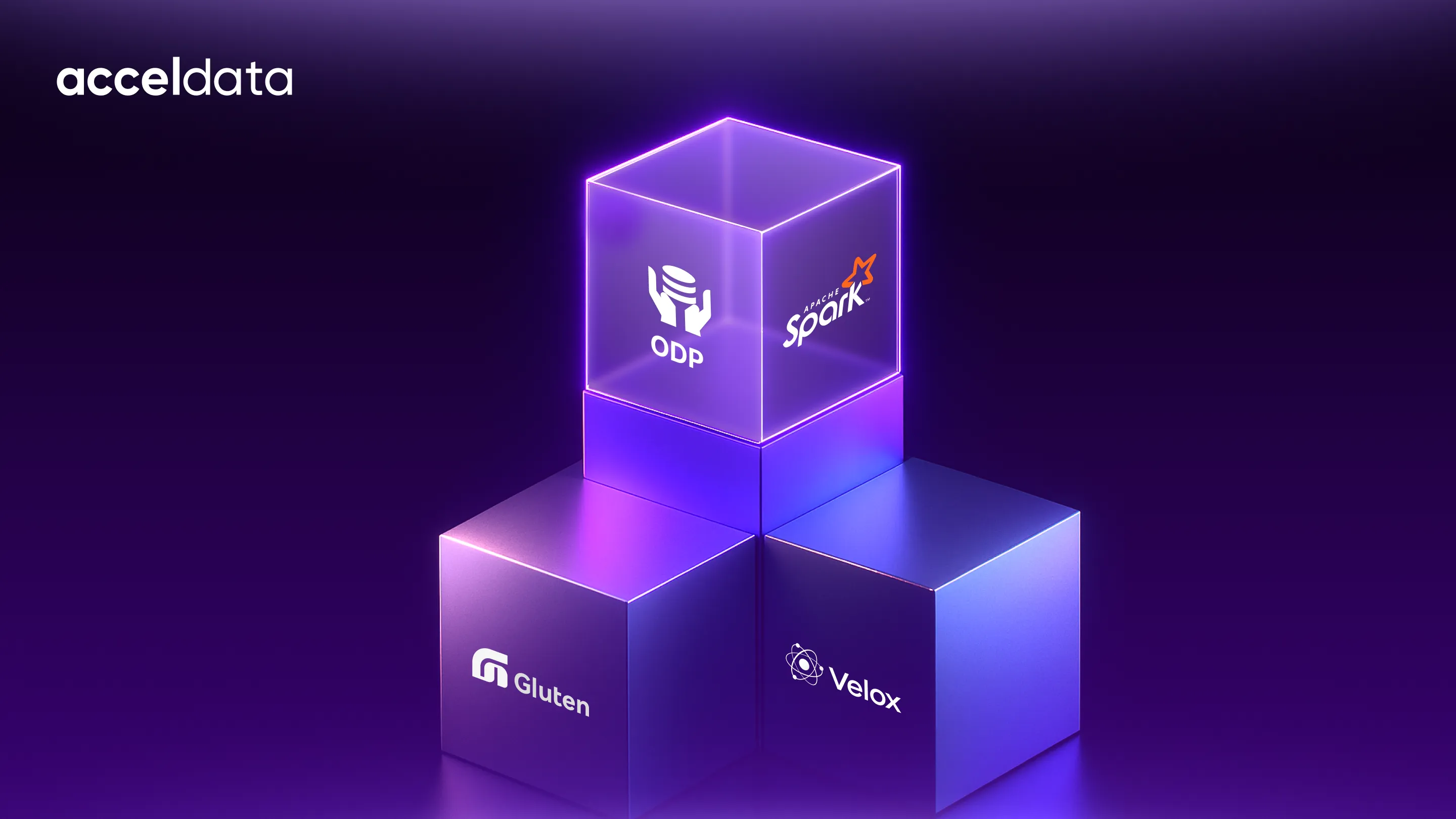The success of artificial intelligence (AI) and machine learning projects doesn’t just depend on advanced algorithms. It depends on the quality of the data you feed into them. That’s where AI-ready data comes in, as it bridges the gap between raw information and real-time intelligence.
AI-ready data is clean and structured. It gives accurate information that can be used directly by AI systems to generate insights, automate tasks, and make reliable predictions. For enterprises, this means faster decision-making, more efficient operations, and a stronger competitive advantage.
That being said, let’s explore what makes data AI-ready and why it’s essential for your business.
What is AI-Ready Data?
AI-ready data is information that has been processed, cleansed, and structured so it can be used immediately by AI systems. Instead of cleaning raw datasets for weeks, you can feed AI-ready data directly into models for analysis, automation, and decision-making. This AI data preparation ensures your AI systems deliver results that are accurate and trustworthy.
Key Features of AI-Ready Data
Here are some key features that make AI-ready data a necessity for your business to have better insights.
1. Data consistency
Your data should tell the same story across systems and time. A retail chain that stores “CA” as California in one system and “Calif.” in another creates confusion. AI models can misinterpret such inconsistencies, leading to errors in demand forecasting. Consistency avoids these losses and provides AI with a single version of the truth.
2. Accuracy
AI cannot afford to learn from errors, duplicates, or outdated records. Imagine a hospital with duplicate patient files; AI could assign the wrong treatment plan. In finance, even a small error in transaction data may lead to false fraud alerts. Clean, accurate data reduces risk and builds confidence in AI-driven insights.
3. Structured formats
AI works best with structured inputs such as tables, databases, or spreadsheets. Think of supply chain data stored in consistent formats. AI can quickly flag late shipments or optimize routes. Without structure, AI spends more time sorting data than producing insights. Structured data accelerates analysis and enhances reliability.
By meeting these conditions, AI-ready data becomes the foundation for advanced capabilities such as anomaly detection and auto governance. Enterprises that adopt these practices move faster, extracting more value from their AI investments.
Why Enterprises Need AI-Ready Data
AI adoption is accelerating, but many enterprises struggle with poor data foundations. That’s why they need AI-ready data. Let’s take a closer look at the reasons below:
1. Unlocking AI’s full potential
AI only works as well as the data behind it. In 2024, 78% of organizations reported using AI in at least one business function, up from 55% the previous year. Yet fewer than 1 in 10 businesses are considered fully AI-ready because their data is not prepared or structured for AI use.
When your data is AI-ready, models deliver insights quickly and more reliably.
2. Improved decision-making
High-quality data produces high-quality predictions. With AI-ready data, you can trust the outputs of your AI models.
Think of a retailer using clean sales data. Instead of reacting to empty shelves, they can forecast demand accurately, keep products in stock, and improve customer satisfaction. The same applies across healthcare, finance, or logistics. Decisions become sharper and outcomes more predictable with AI models that rely on quality data for AI and machine learning.
3. Operational efficiency
AI-ready data also reduces the time your teams spend on manual work. Clean, structured data allows automation to handle repetitive tasks. For instance, AI systems can scan financial transactions in real time and flag suspicious activity for review.
This efficiency compounds across the organization. Processes that once took hours now finish in minutes. Teams focus on strategy instead of firefighting. Costs fall, while speed and accuracy improve.
How to Prepare Data to Be AI-Ready
Now let’s talk about what needs to happen before you plug data into AI systems to ensure it’s prepared for real-world use.
1. Data cleansing
AI cannot work with messy data. Errors, duplicates, and inconsistencies confuse algorithms and lead to poor outcomes. Picture a healthcare provider with duplicate patient records. If the system treats them as two separate people, the wrong dosage or diagnosis might follow.
By cleansing data before it reaches AI systems, you reduce these risks and create reliable inputs for analysis.
2. Data structuring
Once the data is clean, it needs to be organized. AI models work best when information is arranged in structured formats such as tables, spreadsheets, or databases. For example, by consolidating data into one structured database, a retailer can predict demand, optimize inventory, and personalize offers in real time.
3. Data integration
Most enterprises collect information from systems, CRM platforms, ERP tools, IoT devices, and other customer apps. Keeping these sources separate makes it impossible to see the full picture. Integrating them into a unified data system is what makes data AI-ready.
The Role of AI-Ready Data in Unlocking Business Insights
To extract real, actionable insights, AI needs the right kind of data. Let’s explore how AI-ready data makes that possible.
1. Better analytics
Analytics only works if the data feeding it is reliable. With AI-ready data, your reports are built on information that is accurate and structured. This means fewer errors, more consistent dashboards, and results you can act on.
For many enterprises, the difference is clear. Instead of debating which report is correct, teams align on a single source of truth. That clarity speeds up decisions and strengthens trust in the numbers.
2. Predictive insights
AI-ready data also makes predictive modeling more powerful. Clean, complete data lets AI forecast future trends with greater accuracy. Retailers can anticipate demand shifts, manufacturers can predict equipment failures, and healthcare providers can identify risks earlier.
These forecasts are not perfect, but when AI data quality is high, they move from being guesses to reliable guidance. For leaders, that means you can plan with more confidence.
3. Real-time data processing
Waiting for reports can cost your business both time and opportunity. AI-ready data supports real-time insights to help you act instantly. AI-ready enterprises, moving from reactive to proactive data strategies, gain a critical edge. With the right systems in place, you can monitor continuously, detect issues early, and keep your data accurate and up-to-date for immediate analysis.
Benefits of AI-Ready Data for Enterprises
Let’s take a look at what improves when data stops being a bottleneck and acts as a growth lever with AI-ready data.
1. Increased efficiency: AI-ready data cuts down the time spent on preparation. Instead of cleaning and fixing raw inputs, your teams can move straight to data management strategizing. When your data is already AI-ready, it allows you to use your resources more effectively.
2. Improved accuracy: AI models only perform as well as the data they are trained on. With clean, structured inputs, your predictions are sharper and more reliable. In industries such as healthcare or finance, even a small error in data can lead to wrong diagnoses or false fraud alerts. Maintaining quality standards ensures that AI insights are actionable, not misleading.
3. Cost savings: Errors and inefficiencies in data management are expensive. At the enterprise level, these costs show up as wasted labor, flawed strategies, and missed opportunities. By ensuring your data is AI-ready, you eliminate much of the manual work and avoid costly mistakes.
4. Scalability: As your business grows, so does the volume and variety of your data. Structured, integrated AI data pipelines expand analytics and automation without breaking existing processes. A retailer scaling from 50 stores to 500, for instance, can still rely on the same AI models if the underlying data remains consistent and clean.
Real-World Examples of AI-Ready Data in Action
The value of AI-ready data becomes clear when you see how it shapes outcomes across different industries.
1. Retail: Amazon’s recommendation engine drives 35% of its revenue by analyzing customer browsing and purchase behavior to personalize shopping experiences in real time.
2. Healthcare: Stanford research highlights AI in medical imaging for cancer detection, trained on well-curated data, leading to higher diagnostic accuracy and earlier intervention.
3. Finance: Citibank applies AI on validated datasets for underwriting automation, enabling faster loan approvals and better risk prediction.
4. Manufacturing: Siemens integrates AI with clean, consistent data to improve supply chain visibility and manufacturing throughput.
Best Practices for Ensuring Data is AI-Ready
Making data AI-ready is a continuous discipline. Below are the foundational practices that set your data up for long-term success.
1. Define data standards: Data needs rules to stay consistent. Establishing standards across your organization ensures that every team collects and stores information consistently. This consistency reduces confusion, avoids duplication, and keeps your AI systems running smoothly. Companies that adopt strong standards often see faster onboarding of new AI initiatives because the foundation is already in place.
2. Automate data processes: Automating collection, validation, and transformation maintains quality at scale. Data automation with AI also ensures that data workflows remain consistent as volumes grow. Imagine a retailer processing millions of transactions daily. With automation in place, errors are caught instantly, and AI systems receive clean inputs without human intervention.
3. Regular data audits: Even high-quality data degrades over time. Periodic audits help identify missing fields, duplicates, or outdated records. These checks maintain readiness and prevent small issues from growing into systemic problems.
The Future of AI-Ready Data
As AI systems evolve, so does the demand behind them. Let’s explore where it’s headed and what that means for enterprises.
1. Self-learning systems
The next stage of AI-ready data is self-learning systems that adapt without constant human input. With feedback loops and reinforcement learning, these systems detect anomalies, fix quality issues, and create AI-ready data pipelines in real time. For you, this means fewer manual corrections and faster cycles of innovation.
2. Integration with emerging technologies
AI-ready data management is also converging with technologies such as blockchain and the Internet of Things (IoT). Blockchain strengthens trust by making your data traceable and tamper-proof. IoT adds continuous sensor streams that expand what you can monitor and analyze.
3. AI-driven data management
AI is no longer only a consumer of data. It is becoming the manager of it. Intelligent platforms now catalog, validate, and govern your data automatically. They manage workflows, detect risks, and monitor compliance without your team needing to step in. This makes complex architectures easier to manage and keeps your data AI-ready as you grow.
Build an AI-Ready Future with Acceldata
With Acceldata’s agentic data management platform, you get AI agents that automatically detect anomalies, improve data quality, and optimize pipelines in real time. Capabilities such as the Data Quality Agent and Data Lineage Agent ensure your data is clean, consistent, and trustworthy, exactly what you need for better AI-driven data insights.
Ready to unlock the power of AI-ready data? Discover how AI-ready data can transform your business operations, improve decision-making, and help you stay ahead of the competition. Request a demo today.
FAQs About AI-Ready Data
1. What makes data AI-ready?
AI-ready data is clean, well-structured, and consistent. It follows clear schemas and governance rules to ensure accuracy, completeness, and easier interpretation by AI systems. Proper metadata and documentation also help AI models understand and use the data correctly.
2. Why is AI-ready data important for businesses?
AI models rely heavily on the quality of their input data. Poor or inconsistent data leads to unreliable predictions, flawed insights, and compromised decision-making. Businesses with AI-ready data gain faster, more scalable AI adoption and reduce costly remediation efforts. This readiness directly translates into improved ROI, operational efficiency, and competitive advantage.
3. How can I ensure my data is AI-ready?
Use standardized formats, clean and validate data regularly, and enforce metadata and governance best practices. Automate quality checks and maintain data lineage to keep your data trustworthy and ready for AI.
4. What are the industries that benefit from AI-ready data?
Virtually every sector benefits from AI-ready data. Retail, healthcare, finance, and manufacturing benefit the most, leveraging it for personalization, diagnostics, fraud detection, and predictive maintenance.














.webp)
.webp)


